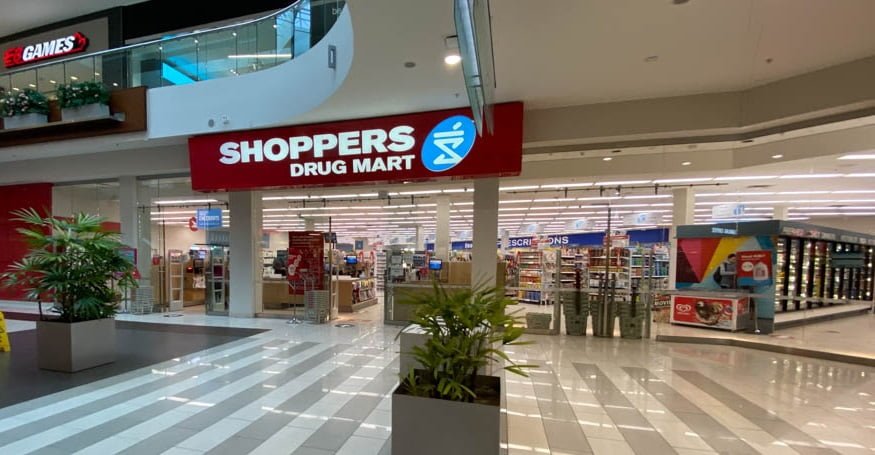Montreal-based online luxury fashion retailer Ssense is preparing to file for protection under the Companies’ Creditors Arrangement Act (CCAA) after its lenders moved to force a sale of the business. The development represents one of the most dramatic shifts in Canadian retail this year, raising questions about the viability of luxury e-commerce in an increasingly uncertain global environment.
Retail strategist Carl Boutet described the situation as “a shocker,” noting that many in the industry saw Ssense as an exception to the turbulence facing luxury e-commerce.

“We thought Ssense might be an exception, but unfortunately this shows even the strongest online luxury players are vulnerable,” said Boutet. “Luxury e-tail as a standalone business model has been struggling for years because of high return rates, thin net margins, and shifting consumer preferences.”
At the heart of the crisis is a conflict with Ssense’s primary lender, which has made its own CCAA application to place the retailer into creditor protection and begin a sale process. Founder and chief executive officer Rami Atallah described the move as against the company’s wishes.
“We do not believe this is the right path for Ssense,” he wrote in a message to employees, confirming that the company would file its own rival application.
Company spokesperson Janet Park echoed the concern, noting that Ssense has spent recent months negotiating in good faith with lenders to secure recapitalization.
“While we sought a collaborative path forward, our primary lender has chosen instead to place the company under CCAA protection and commence a sale process without our consent. We are deeply disappointed in this decision,” she said.
Boutet emphasized that the lender’s move signals how little confidence remains in Ssense’s ability to weather the storm.
“When an investor of this scale pushes for creditor protection, it’s a red flag,” he said. “If it was just a matter of connecting them with new capital, that would have already happened.”
Economic and Policy Pressures
The luxury e-commerce player is not alone in its struggles. Broader market headwinds, compounded by geopolitical uncertainty, have weakened sales and liquidity. A key blow came from Washington’s decision to eliminate the long-standing duty-free exemption on packages worth less than US$800 entering the United States.
The rule, ending this week, has been cited by Atallah as a significant factor affecting Ssense’s U.S. customer base. With many shipments falling below that threshold, the change has altered cost structures and dampened demand.
Park added that the company had “explored every option with advisers to refinance and restructure,” but that filing for CCAA protection was ultimately the only viable survival strategy.
Boutet noted that suppliers, too, are under strain as luxury retailers delay payments. “There are probably some suppliers feeling extra pressure of having so many ‘stretched’ receivables,” he said. “Between Saks Global and Ssense not paying bills on time, it’s rough on suppliers’ cashflow.”

A Global Retail Force in Jeopardy
Founded in 2003 by brothers Rami, Firas, and Bassel Atallah, Ssense became a pioneer in luxury e-commerce, blending technology, editorial content, and curated fashion to capture a global audience. The company ships to more than 150 countries and offers over 600 designer labels, ranging from avant-garde fashion to luxury streetwear.
In 2018, Ssense unveiled its flagship store in Old Montreal, designed by acclaimed architect David Chipperfield. The space is as much a cultural venue as a retail destination, with personalized appointment-based shopping, curated exhibitions, and exclusive events.
At its height, Ssense was valued at US$5 billion following a minority investment from Sequoia Capital in 2021. Revenue reportedly exceeded US$750 million annually, making it one of Canada’s largest private retail-technology companies.
The Market Reality Behind the Valuation
Boutet explained that Ssense’s lofty valuation was tied to pandemic-era conditions that drove online shopping frenzies across the luxury sector.
“That US$5 billion valuation in 2021 was at the peak of the frenzy. Now, expectations are correcting. Even for HSG (formerly Sequoia China), Ssense is a write-down, and that speaks volumes about how difficult this market has become,” he said.
He noted that Ssense’s reliance on Gen Z luxury consumers left it exposed to economic pressures affecting younger demographics. At the same time, major luxury houses tightened distribution, limiting Ssense’s ability to carry the most in-demand collections.
The Flagship Store: A Cultural Landmark
Ssense’s Old Montreal store has long been considered a benchmark in experiential retail. The imposing minimalist space, with stark concrete and stainless finishes, reflects the retailer’s commitment to curation and exclusivity.
The store includes areas for fragrance, footwear, and luxury streetwear, and once housed a restaurant on the upper level, though it never reopened after the pandemic. The brand also became known for high-profile collaborations, such as launches for Justin Bieber’s Drew line, Ferrari capsule collections, and Off-White exclusives.
“I always bring visiting students and colleagues to the Ssense store,” Boutet reflected. “It is intimidating, but intentionally so. That is part of the allure.”

A Luxury Sector in Flux
Ssense’s troubles come as the global luxury industry itself faces slowing growth. Giants such as LVMH, Kering and Richemont have reported weaker sales in recent quarters, with consumer demand shifting away from discretionary luxury purchases.
Other e-commerce pioneers, including Farfetch and Net-a-Porter, have also struggled. Farfetch was recently acquired at a fraction of its earlier valuation, underscoring the broader challenges in sustaining profitability in luxury e-commerce.
What Comes Next?
The immediate question is whether Ssense’s restructuring plan will be accepted by the courts or whether its lenders will push through a sale. If the court sides with the company’s proposal, Atallah has said it will focus on restoring vendor trust, stimulating demand, and optimizing supply chains.
But analysts caution that the outlook remains uncertain. Potential buyers could include global e-commerce giants such as Amazon or Alibaba, regional players in Asia and the Middle East, or private equity firms seeking to consolidate luxury platforms.
A Legacy at Risk
Whatever the outcome, Ssense’s rise and potential fall mark a significant chapter in Canadian retail history. From its origins as a scrappy Montreal start-up to a global tastemaker, Ssense transformed the way fashion and technology intersect.
Its model of editorial-driven commerce, trendsetting collaborations, and cultural integration made it one of the most influential players in online luxury retail. Yet as its future hangs in the balance, the case of Ssense underscores the volatility of the luxury e-commerce model.
As Boutet concluded:
“There are rarely single causes in these situations. It’s usually a perfect storm of economic, cultural, and operational challenges. Ssense built something unique, but the market has shifted. Now it’s up to the courts, and perhaps new investors, to decide if the brand’s story continues.”
















